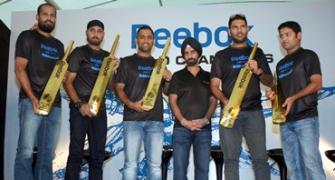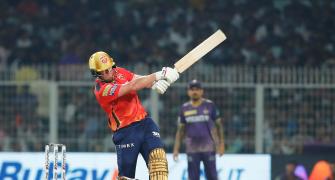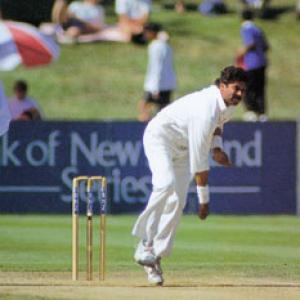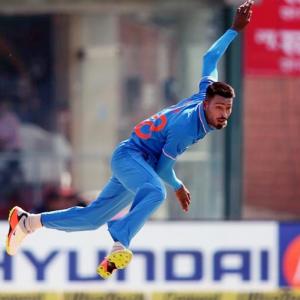'Perhaps the biggest change is in terms of mindset when it comes to the art of the possible when chasing.'
'A modern team knows that knocking off 120 runs in 10 overs is eminently possible.'
'When things click, that can translate into 450 in 50 overs,' says Devangshu Datta.
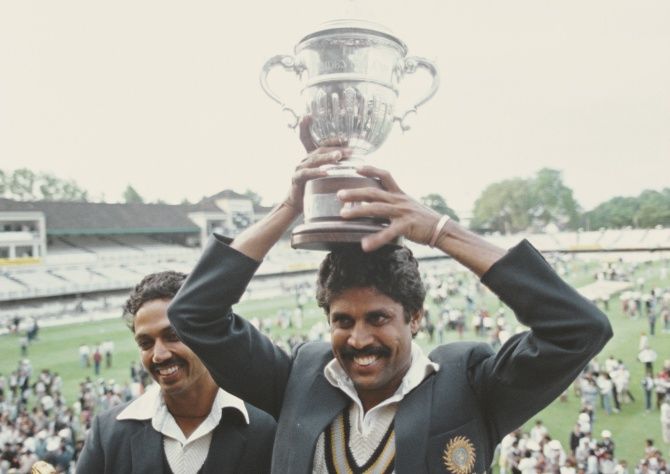
In a happy coincidence, Kapil Dev celebrated his 60th birthday as India won its first cricket Test series in Australia.
Kapil's heroic effort more than 30 years ago was responsible for India's first series tie in Australia when he hobbled through a match-winning spell. He also played a leading role in the 1983 World Cup win.
That was the start of India's long-running love affair with cricket. Before that, it had been an infatuation, with hockey the preferred passion.
Thanks to Jagmohan Dalmia's marketing, and a bunch of corporates getting onto the bandwagon, India became the epicentre of one-day cricket. And then, of course, thanks to M S Dhoni and co, 20 overs became the default entertainment option for Indians.
Looking back, it's amazing how much cricket has changed.
The money is, of course, unreal, and it must seem incomprehensible for those who retired before instant cricket.
A 20 year old without a first class debut could make more money in a season than a Test cricketer of the 1970s made in his entire career.
Technology and technique have transformed.
Heavy bats, lightweight pads, helmets, has made life a lot easier for batsmen, wicket-keepers and close catchers.
The fact that a 21st century bat can edge a six has led to changes in methods.
Simply listing changes in format will take more space than this column possesses. But most of those changes have been positive.
The emphasis on decisions filtered across into Test cricket and it resulted in two key mandates.
Playing hours were standardised, ensuring six hours play everywhere -- subcontinental cricket used to be five-and-a-half hours earlier.
Over rates were pushed up to 15 overs an hour with stringent penalties. More than anything else, those two changes have ensured decisive Test matches and forced teams to move away from the West Indian model of four quicks bowling 12 overs an hour.
Third umpiring and reviews make the game a lot fairer too.

In terms of technical skills, even the most stately of modern fielders would be better than the average Test player of the 1980s.
The only question mark would be slip catching since one-day cricket usually doesn't involve several slips. So there can be issues finding a second and third slip in a Test.
Bowlers have developed an entirely new set of skills. The yorker and the well-disguised slower delivery have developed into an art form.
Wrist spinners have become the norm -- I cannot recall any earlier period in cricket history when every Test side looked to play a leggie. At the same time, every modern team has a pair of decent quicks on call.
Batting in modern cricket also involves new skills. The 360-degree batsman, who is prepared to play ramps and reverse sweep to find a gap, was unheard of until the advent of the T-20 format.
The 360 players are still a rarity but becoming more common by the day. Ancillary skills such as running for every push and planning a chase have also sharpened.
Back in the 1970s, Asif Iqbal and Javed Miandad were geniuses at manufacturing quick singles. The average 21st century cricketer would consider these skills basic.
While a few genuine tailenders exist, most number 10 and 11 batsmen usually know how to whack a few runs.
The game has become far more tactical in its approach. Every player is aware of the situation, ball by ball.
Captains, coaches and bowlers do their best to work out specific contingency plans for every individual member of the opposition.
Statistical analysis and video analysis are par for the course.
Perhaps the biggest change is in terms of mindset when it comes to the art of the possible when chasing.
A modern team knows that knocking off 120 runs in 10 overs is eminently possible. When things click, that can translate into 450 in 50 overs.
Similar changes have occurred in tennis and football. The key connecting variable would be money, which drives research that produces technical advances.
Money, of course, follows from popularity. I wonder which sport or game will be the next recipient.




